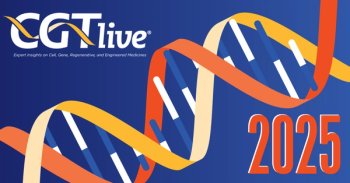
JCAR015 Experience Informs Future CAR-T Studies
The high rates of cerebral edema seen with JCAR015 in the phase II ROCKET trial were attributed to early and rapid chimeric antigen receptor (CAR)-modified T-cell expansion and a rise in interleukin-15 levels, a finding that could help inform future CAR T-cell usage.
Mark J. Gilbert, MD
The high rates of cerebral edema seen with JCAR015 in the phase II ROCKET trial were attributed to early and rapid chimeric antigen receptor (CAR)-modified T-cell expansion and a rise in interleukin (IL)-15 levels, a finding that could help inform future CAR T-cell usage, according to a presentation at the 32nd Annual SITC Meeting.1
In addition to IL-15 and T-cell expansion, the ROCKET trial analysis also identified clinical factors associated with cerebral edema, particularly when 2 or more of these factors were present concurrently. Moreover, patients with fatal cerebral edema were found to have endothelial damage and a complete breakdown of the blood-brain barrier that was not associated with CAR T-cell infiltration, central nervous system (CNS) leukemia, or prior CNS leukemia therapies.
The key factors associated with cerebral edema were age (<30 years; odds ratio [OR], 5.16; 95% CI, 0.83-55.93; P = .112), treatment with ≤2 prior regimens (OR, 7.24; 95% CI, 0.72-980.23; P = .208), intensive bridging chemotherapy (OR, 4.68; 95% CI, 0.63-32.64; P = .133), and high- intensity lymphodepletion with fludarabine and cyclophosphamide (OR, 7.25; 95% CI, 1.14-53.98; P = .045).
“The exploratory analyses we did identified multiple factors associated with cerebral edema but it requires both factors related to the patient as well as factors related to the process itself,” said Mark J. Gilbert, MD, chief medical officer at Juno Therapeutics, which is the company that developed JCAR015, during a presentation at Plenary Session 102. “Patients who did develop cerebral edema in ROCKET did not have only 1 of these factors, they had all of these factors or almost all of these factors. They are identifiable patients.”
The ROCKET trial, which was discontinued in March 2017, was initially paused in July 2016 following 3 deaths from cerebral edema. At this point, the trial was altered to exclude fludarabine, which is known to have neurological adverse effects. Following continuation of the study in November 2016, there were 2 additional patient deaths related to cerebral edema, leading to discontinuation.
Following the discontinuation of JCAR015, Juno Therapeutics announced that it was shifting its research focus toward JCAR017, which uses a precise flat dose of CD8 and CD4 cells. Findings from the ROCKET study were instrumental in this transition, Gilbert noted, as many of the neurotoxicity events were associated with variability in cytokine production and nonapoptotic CD8+ CAR+ cells, an issue that the fixed-ratio strategy utilized for JCAR017 could avoid.
Several other key differences exist between the 2 CAR T-cell therapies. JCAR015 was manufactured from CD3+ enriched peripheral blood mononuclear cells, whereas JCAR017 is built using a fixed ratio of CD4+ and CD8+ T-lymphocytes. Each agent is engineered using different viral vectors, namely gamma retroviral for JCAR015 and lentiviral for JCAR017. The binding domain for JCAR015 is SJ25C1 and the costimulatory domain is CD28, whereas JCAR017 has a binding domain of FMC63 and a costimulatory domain of 4-1BB.
“There’s no evidence in the work we’ve done to say that the CAR construct contributed significantly,” he said. “We do know that if the primary issue is rapid expansion, in our hands at least, CD28 CAR T-cells do seem to expand faster than the 4-1BB versions that we’ve been studying.”
In addition to the posthoc assessment of toxicity, clinical findings from the ROCKET trial were presented in a poster session at the SITC meeting.2 Overall, the trial enrolled 38 adult patients with B-cell acute lymphoblastic leukemia at a median age of 39 years, of which 32 had morphological disease. Forty-two percent of patients were <30 years old and the median number of prior therapies was 2 (range, 1-7), with half receiving prior blinatumomab.
In those with morphological disease at baseline, the complete remission (CR) or CR with incomplete hematologic recovery (CRi) rate was 47% (95% CI, 29%-65%; P <.0001). At day 28 specifically, which was the primary endpoint, the CR/CRi rate was 59% (95% CI, 41%-76%; P <.0001). For responders (n = 18), 89% tested negative for minimal residual disease. After a median follow-up of 12.9 months, the median overall survival was 8.1 months (95% CI, 5.2-not reached). The median relapse-free survival was 4.4 months (95% CI, 2.1-9.4). The median time to first CR/CRi following JCAR015 was 48 days (range, 28-88).
Severe cytokine release syndrome was experienced by 22% of patients treated with JCAR015 and severe neurotoxicity was observed in 56% of patients in the trial. The posthoc analysis showed a correlation between early peak CAR T-cell expansion and fatal neurotoxicity. Cerebral edema was not associated with prior CNS irradiation, prior intrathecal chemotherapy, prior CNS disease, prior allogeneic transplant, higher ECOG performance status, or prior blinatumomab.
References
- Gilbert MJ. Severe neurotoxicity in the phase 2 trial of JCAR015 in adult B-ALL (ROCKET Study): analysis of patient, protocol and product attributes. Presented at: 32nd Annual SITC Meeting, National Harbor, MD, November 8-12.
- DeAngelo DJ, Ghobadi A, Park JH, et al. Clinical outcomes for the phase 2, single-arm, multicenter trial of JCAR015 in adult B-ALL (ROCKET Study). Presented at: 32nd Annual SITC Meeting, National Harbor, MD, November 8-12. Poster P217.
Although not directly associated with the rates of cerebral edema, the CD28 costimulatory domain used for the JCAR015 construct has been associated with faster T-cell expansion compared with the 4-1BB costimulatory domain, noted Gilbert.
Newsletter
Stay at the forefront of cutting-edge science with CGT—your direct line to expert insights, breakthrough data, and real-time coverage of the latest advancements in cell and gene therapy.




